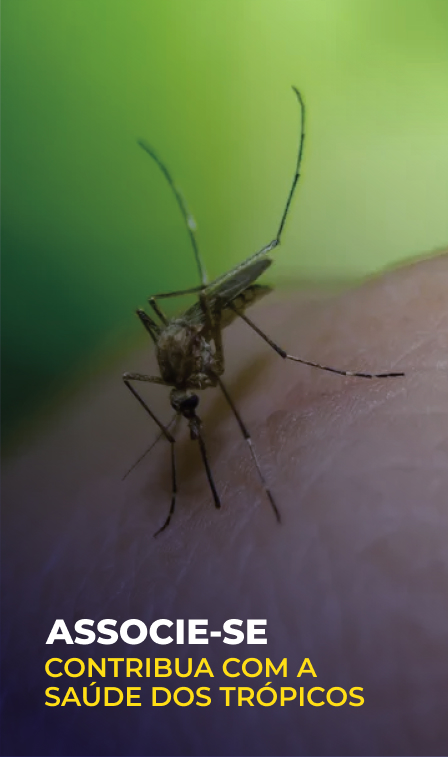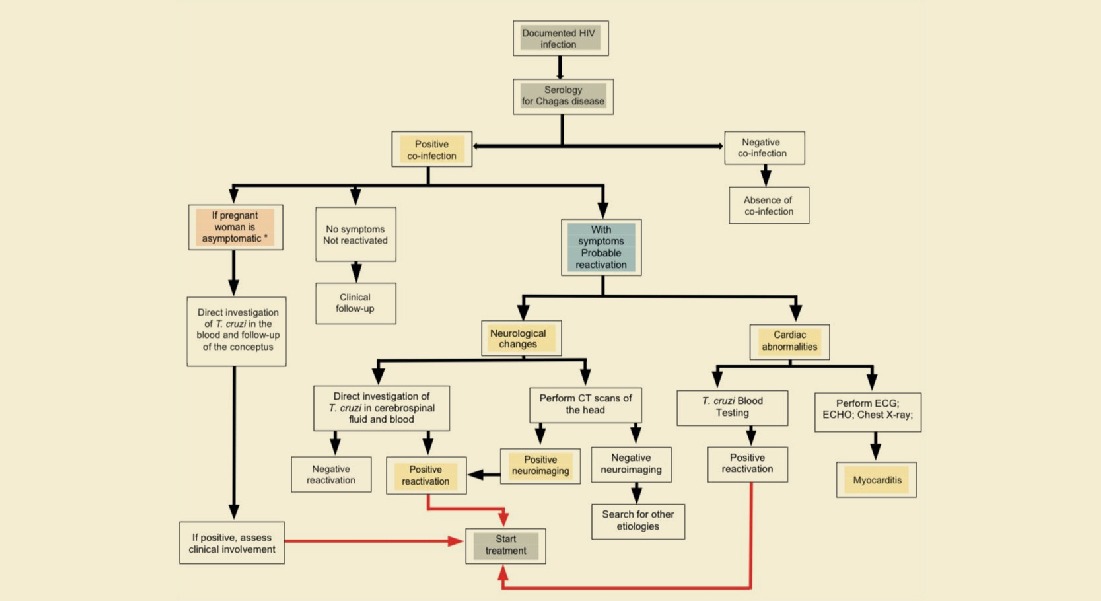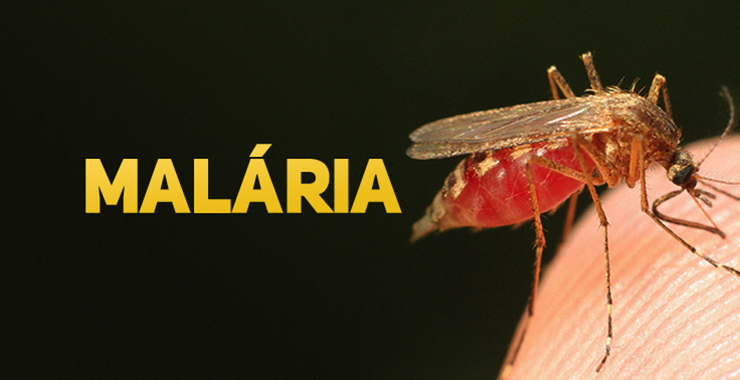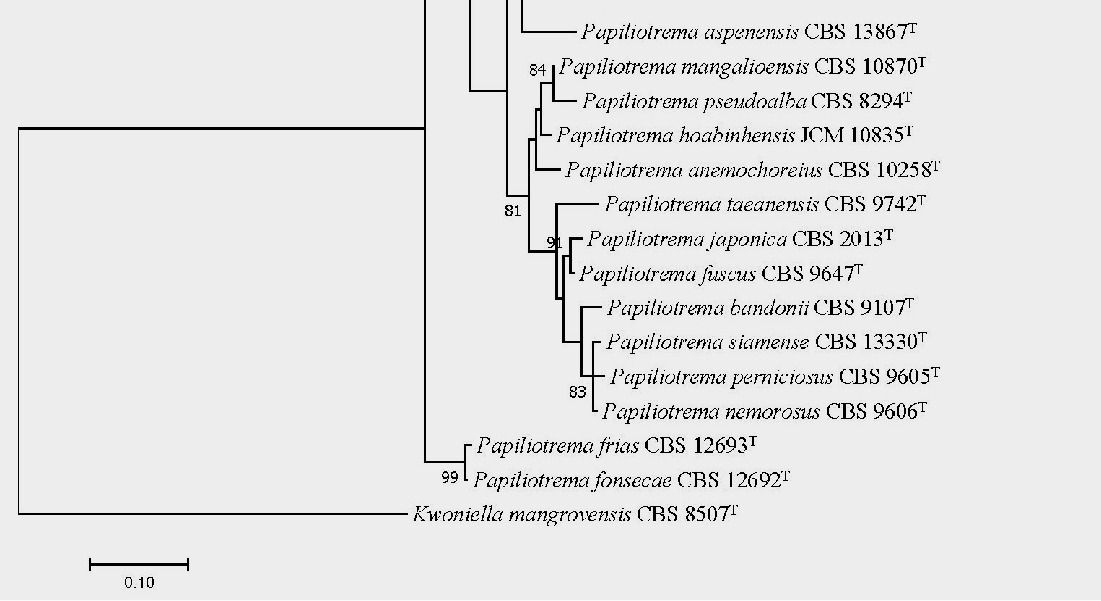
Researchers find sandfly infected by filaria
Worm from the same family as the parasite that can cause blindness, among other health problems, was found during a study on leishmaniasis
08/05/2021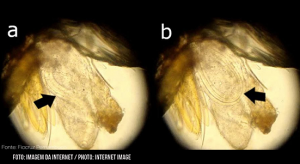
Microscopic photograph of the head of a specimen Ps. carrerai carrerai female with the presence of a larva of the worm Onchocercidae. (A) Larvae in linear conformation and (B) Larvae in round conformation
Brazilian researchers involved in studies on leishmaniasis vectors found, for the first time in the Americas, larvae of a worm of the genus Onchocerca in a sandfly mosquito, the transmitter of leishmaniasis. The professor at the Federal University of Acre (UFAC), a doctor in public health who leads the research, Dr. Andreia Brilhante, co-authored a scientific article in the renowned journal Scientific Reports entitled “First report of an Onchocercidae worm infecting Psychodopygus carrerai carrerai sandfly, a putative vector of Leishmania braziliensis in the Amazon” reporting this important discovery in the field of parasitology. The authors also managed to record a video with the worm in motion, available in the publication.
Although the larvae found in the insect has morphological characteristics, movement similar to L3, and the species of sandflies in which the larvae were found to be very anthropophilic, it is not known whether the filarid manages to develop its cycle until it becomes infectious to humans, or in than other animals. Therefore, there is a need for further investigations based on this research and this finding that brought news to science.
The discovery could strike further research on investigating the role of sandflies in the transmission of other pathogens, different from those already known. “In addition to this, it shows the importance of conducting fresh research on insects collected in the field, especially in the Amazon region, where the greatest biodiversity in the world is found, even though it is often difficult due to the logistics or physical conditions of difficult access places, when at some times of the year, as in the rainly season, it becomes more complex, emphasizes Dr. Brilhante while lamenting the scarce allocation of financial resources for research.
The researcher says that it all started with the decelopment of her doctoral research project on sandfly and leishmaniasis fauna in the municipality of Xapuri, a city that is 187 kilometers from the capital of Acre, Rio Branco. The work looked for flagellated forms of tripassomatids in sandflies, dissecting the females that were examined under the microscope in search of these forms. “The dissections were carried out while still in the field, at the Xapuri Endemic Management. In order to identify the species of sandflies, in addition to other structures, we observed the females head. It was when we observed filarid larva in two females of the species Psychodopygus careeri. The finding was a great surprise, as we had never seen anything like this”, details Dr. Brilhante.
The larvae were photographed and the material sent to the National Reference Service in Filariasis and Fundação Oswaldo do Cruz (Instituto Aggeu Magalhães) so that the parasite could be characterized by molecular biology tools. The identification revealed to be the larva of Onchocercidae. Questioned about what explains these sandflies infected with the filarid larva, the professor explains that the place where the insects were collected is located in the Amazon region, with preserved forest, the presence of different wild mammals, and in the surroundings, domestic animals are found, common of rural areas. According to her, this leads to the belief that these animals, wild and domestic, may be participating in the transmission cycle of this filarid and infecting sandflies that feed on them.
The article reports that there is no record of parasitic diseases caused by filarias in the municipality of Xapuri. However, she mentions that, in the past, there was the occurrence in the vicinity of Mansonella ozzardi, a filaria belonging to the Onchocercidae Family, widely endemic in the Amazon Region. After the publication of the article, some collections were carried out in the region and so far other species or specimens of sandflies infected with these larvae have not been found. “We are going to continue the field work and the investigations with the vectors, in addition to starting the investigations in domestic and wild animals to check if they are infected with this or other parasites, and to elucidate a little more about the role of these animals and vectors in the cycles of worm transmission, that is, if in fact there is an important epidemiological role or if it was a natural infection without major epidemiological implications”, concludes Dra. Brilhante. The project was carried out through collaboration between UFAC, Fiocruz Pernambuco and the Institute of Hygiene and Tropical Medicine (IHMT), at the Universidade Nova de Lisboa (Portugal).





